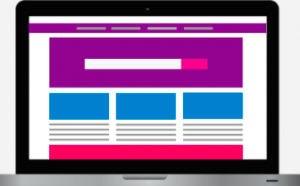How To Build a Digital Portfolio

Having an online presence has a significant impact on your professional career. When applying for positions, it is likely that employers will look you up online. When this happens, it is crucial that you have a professional portfolio ready for employers to browse. Not only is it impressive but they can get to know you more as a professional through the experiences and projects you have done.
If you are keen on taking upside hustles or if you are a full-time freelancer, being searchable online and having your own brand helps clients and customers find you easily. That’s why a digital portfolio is so important. It gives you credibility and provides information for employers, clients and customers about the work that you do.
So if you find yourself searching for your name and nothing but your social media pages come up, maybe it’s time for you to create a digital portfolio. Below are a list of things to take note of when building a digital portfolio:
- Personal Website
A personal website is your online office on the web. It provides general information about you, your past and current projects, and what you do as a profession.
It is not a resume per se, but it should showcase previous work or projects you have done before. Present them as a screenshot, gallery slideshow or PDF file. You should also list the companies or brands you have worked with, awards and recognitions, and any of your publications or media found online.
Moreover, having a website makes you look more professional and credible. It allows people to search you online easily and reach out for collaborations or booking.
If you are worried that you don’t know how to create a website, there are different options out there. These days, it has become easy to have a website without knowing how to code. You can either hire a website developer to design your entire website for you or you can build a free website using a website builder and immediately start adding your content, photos and blog.
- Employer Keywords
Aside from using keywords related to your industry, you should also look at the keywords employers and clients use when they have job postings so you can match your skill set to what they are looking for.
These high demand skills should be the keywords added on your website and Linkedin so clients and employers can find your profile and portfolio easily. When they search those keywords, they can consider hiring you or working with you.
- Social Media Pages
Most of us probably have our social media pages already but have you given a second thought if the contents in them are something you want your employers and clients to see? Unless your social media pages are on private mode, maybe it’s time to start refining them for the public to see.
Having professional social media pages such as on Twitter and/or Instagram is an excellent opportunity to network with people and meet new prospects. Creating a Facebook page is not necessary unless you are a graphic designer or you have your own agency.
Optimize your user bio by writing what you do for a living and other interests, follow people in your industry and comment on their posts. Post your projects on social media for exposure and marketing.
- Blog
Having a blog as an optional feature on your website shows your research skills and what you know about your industry. There are many benefits of a blog as it offers you a chance to put frequent content online.
Being a good writer is also an asset to a company or a client and it gives them a gauge of your technical know-how. Having articles posted on your blog also helps in the search engine optimization of your website and will help get you leads within people to your industry when they search you.
–
Anne Balad is the digital strategist for hPage.com, a website builder where you can create a free website. She also likes sharing her expertise on public relations, digital marketing and research writing. Find her on Twitter @annebalad.

